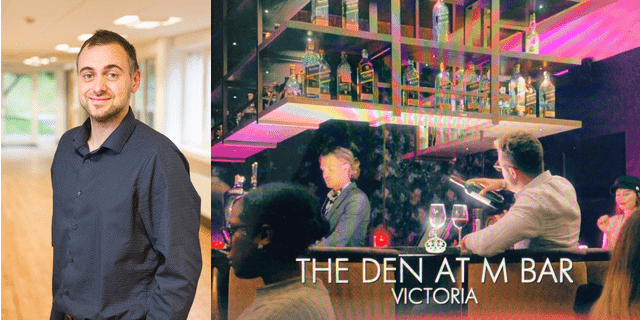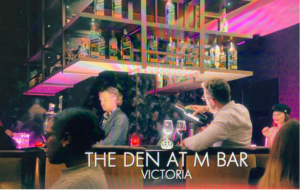
There is now strong, causal evidence that young people who see alcohol advertising or other alcohol content in the media are more likely to start drinking alcohol, or drink more if they already do.
Regulatory controls exist to limit the display of alcohol content on television to protect children from this content. However, we know that young people do not always watch programmes specifically made for them or broadcast before the 9pm watershed. Reality TV, while not specifically targeted at children, appeals to young people by providing a form of escapism and aspirational realism for viewers.
Reality TV programmes are broadcast throughout the year and people may watch different or multiple shows. We measured how much alcohol content was shown, and how much this was seen by young people, in a large sample of reality TV programmes broadcast over a one-year period, in our new article published in the Journal of Public Health.
What we did and what we found
We watched all new reality TV programmes which aired between 1st August 2019 and 1st August 2020 and recorded any alcohol content shown in every 1 minute of the programme (intervals). This included:
- Alcohol use shown on screen
- Implied use, such as a person holding a drink or verbal references, such as ‘Geordie Shore’s’ catchphrase ‘Let’s get mortal’
- Other alcohol content such as wine bottles
- Any brands shown on screen and how many times
In total, we recorded 13,244 1-minute intervals of footage (220.7 hours), across 264 episodes from 20 different reality TV programmes (see Table 1). Alcohol content was seen in 5,167 intervals (39%) across 258 episodes (98%). Using viewing figures and census data, we estimate that alcohol content was seen 3.5 billion times by the UK population, including 197.3 million times by children aged under 16.
Table 1: Programmes included in the analysis
| Title | Series No. | Channel | Country of Origin | No. of episodes |
| Absolutely Ascot | 2 | ITVBe | UK | 8 |
| Ferne McCann First Time Mum | 4 | ITVBe | UK | 3 |
| Geordie Shore | 20 | MTV | UK | 10 |
| Gemma Collins: Diva Forever | 2 | ITVBe | UK | 5 |
| Gemma Collins: Diva on Lockdown | 1 | ITVBe | UK | 3 |
| Ibiza Weekender | 6 | ITV2 | UK | 10 |
| I’m a Celebrity, get me out of here! | 19 | ITV | UK | 22 |
| Keeping up with the Kardashians | 17 | E! | US | 12 |
| Love is Blind | 1 | Netflix | US | 10 |
| Love Island: Australia | 2 | ITVBe | Australia | 29 |
| Love Island: Winter | ITV2 | UK | 36 | |
| Made in Chelsea | 18 | E4 | UK | 11 |
| Made in Chelsea | 19 | E4 | UK | 6 |
| Married at First Sight: Australia | 4 | Channel 4 | Australia | 26 |
| Spencer, Vogue and Wedding two | 1 | E4 | UK | 4 |
| The Circle | 2 | Channel 4 | UK | 22 |
| The Real Housewives of Cheshire | 10 | ITVBe | UK | 9 |
| The Only Way is Essex | 25 | ITVBe | UK | 11 |
| Teen Mom UK | 6 | MTV | UK | 8 |
| Too Hot to Handle | 1 | Netflix | US | 8 |
Alcohol branding was seen in 479 intervals across 122 episodes. In total, 149 different brands were seen with the most seen brands being ‘Peroni’ which was seen 101 times across 58 intervals and ‘Johnnie Walker’, which was seen 84 times across 15 intervals. Branded products were seen 238.8 million gross times, including 12.6 million times by children under the age of 16.
Reality TV programmes are a significant source of exposure to alcohol content to young people.
What regulations are in place to stop this?
The Office of Communications (Ofcom) Broadcasting Code protects under-18s by restricting depictions of tobacco or alcohol use in programmes made for children, and discouraging the glamorisation of tobacco or alcohol use in programmes broadcast before the 9 p.m. watershed or otherwise likely to be widely seen, heard or accessed by children. The broadcasting code also prevents paid for alcohol product placement, however, brands can appear in programmes if they are considered ‘editorially justified’ and were acquired at no significant value, with no providers being paid for the product
However, the current study shows that whilst reality TV programmes are not made for children, they are widely seen by young people and despite a ban on paid-for alcohol product placement, we have shown that alcohol brands are receiving widespread exposure to this content through these programmes, with one example featuring 14 bottles of ‘Johnnie Walker’ in one scene of ‘Made in Chelsea’.

Made in Chelsea – Series 19, Episode 3
What can we do to stop this?
Reality TV programmes feature a large amount of alcohol content and these programmes are widely viewed and seen by young people. Due to the nature of reality TV, with its inspirational role models, it is likely influencing drinking in young people.
The current rules and regulations only protect young people from programmes made for them or broadcast before the watershed and are therefore not sufficient to prevent this exposure to potentially harmful content. The current regulations need revising to prevent this exposure by considering programmes which are popular with young people but not specifically made for them. The ban on paid-for product placement only prevents product placement when programme makers have been paid to include content, regulations should also consider when brands are featured at no cost, as this still leads to widespread brand exposure.
Written by Dr Alex Barker, Lecturer, Nottingham Trent University.
All IAS Blogposts are published with the permission of the author. The views expressed are solely the author’s own and do not necessarily represent the views of the Institute of Alcohol Studies.
